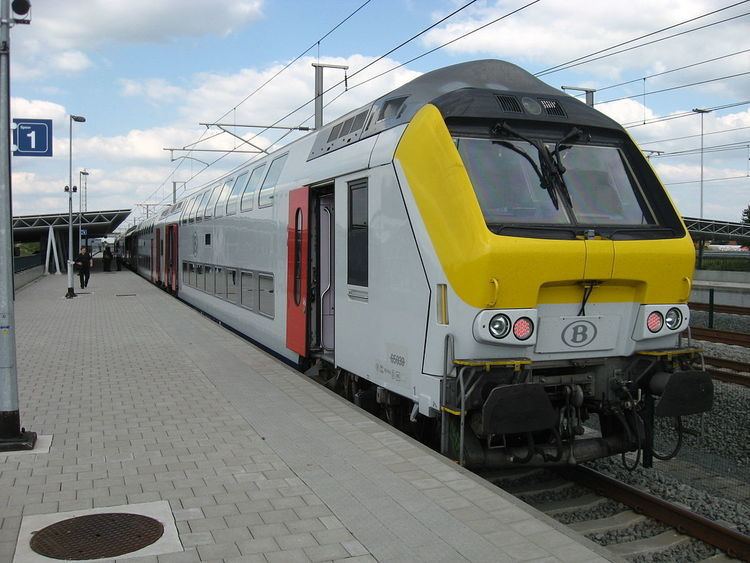National railway NMBS/SNCB Passenger km 9.9 billion per year | ||
 | ||
Major operators Thalys, Eurostar, SNCF, DB (passengers), Crossrail, TrainsporT, Rail4Chem, SNCF Fret, ERS Railways (freight) Ridership 206.5 million per year (excl. DB ICE) Freight 62.2 million tons per year (2006) | ||
Belgium has an extensive rail network. It is a member of the International Union of Railways (UIC). The UIC Country Code for Belgium is 88.
Contents
History
On May 5, 1835, the first railway in continental Europe opened between Brussels-Groendreef/Allée verte and Mechelen. Some sort of railroad or canal had been envisaged as early as 1830. The feasibility of a railroad was investigated by engineers Pierre Simons and Gustave De Ridder. The first trains were Stephenson engines imported from Great Britain. The engines were called Pijl meaning Arrow, Olifant meaning Elephant, and 'Stephenson' (obviously named after its designer). They pulled bench-cars and diligences. On the return from Mechelen, the Olifant pulled all 30 cars. By 1840, Ghent, Bruges, Ostend, Antwerp, Mechelen, Brussels and Leuven were connected. The lines that had to reach Liège, Mons and Kortrijk were partially completed. In 1843, when the major East-West/North-South axes were complete, private companies were allowed to construct and use their own rail systems. These were crucial in the industrialisation of the country.
In 1870, the Belgian state owned 863 km of rail lines, while the private enterprises owned 2,231 km. From 1870 to 1882, the railways were gradually nationalised. In 1912, 5,000 km were state property compared to 300 km private lines. Full nationalisation was considered at the time but was not enacted until 1926, when the SNCB was started. It was named the SNCB (Société Nationale des Chemins de Fer Belges) or NMBS (Nationale Maatschappij der Belgische Spoorwegen), named in a similar way to the French rail network, SNCF. In 1958 the network was fully state-owned. On 5 May 1935 the SNCB started with electrification on the line Brussels North to Antwerp Central, 44 km.
Infrastructure
In 2003, the network constituted 3,518 km of railways, all of which were standard gauge: 1,435 mm (4 ft 8 1⁄2 in) gauge. Of all of those railways, 2,631 km were also electrified. Most electrified Belgian lines use a 3,000 volt d.c. overhead power supply, but the high speed-lines are electrified at 25 kV AC, as are recent electrifications in the south of the country (Rivage - Gouvy and Dinant - Athus lines).
Trains in Belgium normally run on the left hand track. This is in contrast to road vehicles, which drive on the right hand side of the road and is evidence of the British involvement in building the rail network in the 19th century.
The railway network is controlled and maintained by Infrabel, a subsidiary of SNCB Holding.
Policy
Belgium operates a policy of cheap rail travel. Citizens in Belgium, especially students and older citizens, are offered incentives and cheaper fares in order to alleviate congestion on the nation's roads. Public sector employees are entitled to a free or heavily subsidised season ticket for commuting by rail. Many private sector employers will make a contribution to the cost of a season ticket. Smoking is prohibited in all railway stations (since it is an enclosed public place) and passenger cars.
